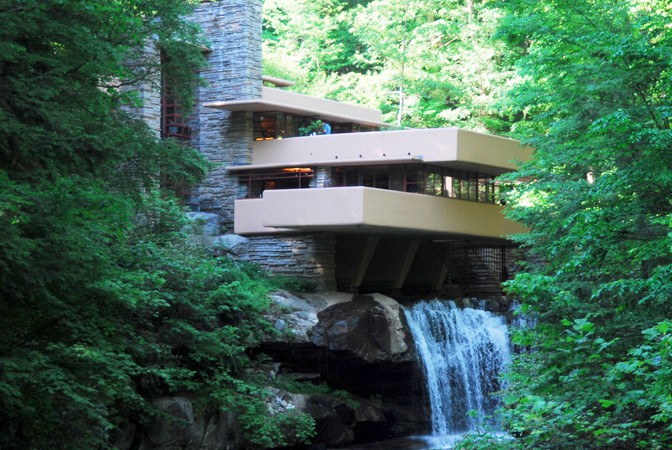3.6 Prairie School
Please Read – pp. 67-76
Goessel, Peter, and Gabriele Leuthäuser. Architecture in the Twentieth Century. Koln, Germany: Benedikt Taschen, 1991. Print. https://archive.org/details/architectureintw0000goss/mode/2up
American Modernism and Frank Lloyd Wright (https://boisestate.pressbooks.pub/arthistory/chapter/modern-architecture/)

One of his most famous houses, Fallingwater, at Mill Run in Pennsylvania was, like Corbusier’s Villa Savoye, a summer retreat for a wealthy merchant, Philadelphia department store mogul Edgar Kaufmann, Sr. and his family. The unexpected thing about Fallingwater was Wright’s genius in its siting. The conventional choice would have been to put the house on the other side of the water looking back toward the waterfall. Wright chose to locate it over the fall itself with open access to the water from the house and views of the water and nature beyond. Local materials were used in the construction along with Wright’s reinforced concrete cantilevered patios making nature an integral part of the design.
Sign in to your library and Choose one of the two different films detailing the history of Wright’s career in design.
“Frank Lloyd Wright: A Film by Ken Burns & Lynn Novick – Part 1.” , directed by Lynn Novick, and Ken Burns. , produced by Peter Miller, Lynn Novick, and Ken Burns. , Public Broadcasting Service, 2010. Alexander Street, https://video.alexanderstreet.com/watch/frank-lloyd-wright-a-film-by-ken-burns-lynn-novick-part-1.
“The Last Wright: Frank Lloyd Wright and the Rebirth of an American City.” , directed by Lucille Carra. , Filmmakers Library, 2009. Alexander Street, https://video.alexanderstreet.com/watch/the-last-wright-frank-lloyd-wright-and-the-rebirth-of-an-american-city.
Attribution:
Introduction To Art by Muffet Jones is licensed under a Creative Commons Attribution 4.0 International License, except where otherwise noted.

